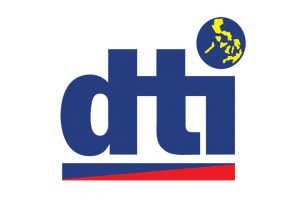Unlocking a new era of security: Embracing the Zero Trust revolution

WHILE the concept of Zero Trust emerged in 2010, it has recently gained significant relevance in the Philippines, particularly in light of the country’s rapid digital transformation and expanding connectivity landscape. As organizations in the Philippines have shifted to remote work policies, the need to secure sensitive data accessed from outside the network is paramount. Traditional security measures designed for a single location is proving inadequate to address the unique challenges presented by the country’s evolving digital landscape.
Administrators have had to adapt and enhance security protocols to mitigate vulnerabilities arising from remote work arrangements. In this context, Zero Trust has emerged as a crucial framework that goes beyond traditional security models, providing a more robust approach to protect sensitive data and combat cyberthreats. By implementing Zero Trust principles, organizations in the Philippines can establish a strong cybersecurity foundation, aligning with the country’s pursuit of a secure and resilient digital environment.
Zero Trust has changed the age-old security axiom “trust, but verify” to “never trust; always verify.” Zero Trust is a security concept that assumes any user, device, or application seeking access to a network is not to be automatically trusted, even if it is within the network perimeter. Instead, Zero Trust requires verification of every request for access, using a variety of security technologies and techniques such as MFA, least privilege access, and continuous monitoring.
The Philippines’ rapid growth in the business process outsourcing industry, coupled with handling of sensitive data on behalf of global clients, further emphasizes the significance of implementing Zero Trust principles in the country. Adopting a Zero Trust approach ensures that every access request, whether from within the organization or by external sources, undergoes rigorous verification, safeguarding valuable data from potential breaches and unauthorized access. By embracing Zero Trust, Philippine companies can demonstrate their commitment to maintaining a secure and reliable environment, fostering trust and confidence among global partners.
Why should Zero Trust be a part of your disaster recovery strategy?
Disaster recovery is a critical component of any organization’s IT strategy, helping to ensure that business operations can continue even in the event of a major outage or cyberattack. In recent years, the concept of Zero Trust has emerged as a powerful new approach to cybersecurity, and now plays an important role in disaster recovery planning.
At its core, Zero Trust is all about ensuring that only authorized users and devices can access a network or application. In the context of disaster recovery, by adopting a Zero Trust approach, organizations can ensure that only authorized personnel can initiate or modify backup tasks and perform restorations, and that the access granted to them is revoked once the operation has been completed.
One of the key benefits of Zero Trust is that it can help minimize the risk of insider threats. This is because Zero Trust assumes that all users and devices are potentially compromised, and each of them requires continuous authentication and verification in order to access resources.
How to implement Zero Trust in your disaster recovery strategy
Implementing Zero Trust in your disaster recovery strategy is a complex process that requires careful planning, execution, and ongoing maintenance. Here are some key steps that organizations can take to implement Zero Trust and improve their disaster recovery capabilities.
• Assess your current environment.
The first step in implementing Zero Trust is to conduct a thorough assessment of your current environment, including your network infrastructure, applications, and data. This will help you identify any potential security gaps or vulnerabilities that could be exploited in the event of a disaster. It’s also important to evaluate your current disaster recovery plan, and ensure that it is aligned with the principles of Zero Trust.
• Define your Zero Trust architecture.
Once you’ve assessed your current environment, the next step is to define your Zero Trust architecture. This will involve identifying the types of security controls and technologies that you will need to implement, such as multi-factor authentication (MFA), micro-segmentation, immutable backup storage, and continuous monitoring. You’ll also need to determine how these controls will be deployed and integrated with your existing infrastructure.
• Implement Zero Trust controls.
With your Zero Trust architecture in place, the next step is to implement the necessary controls and technologies. This may involve deploying new hardware or software, configuring access policies and rules, and training your staff on how to use these new tools effectively.
Your disaster recovery solution should always require users to authenticate themselves via MFA before any operation is performed. When users are authorized, access to configure and operate the backup and restoration modules should be provided for a limited duration.
• Monitor and review your Zero Trust environment.
Implementing Zero Trust is an ongoing process that requires continuous monitoring and review. You’ll need to establish metrics and KPIs to measure the effectiveness of your Zero Trust controls, and regularly review your environment to identify any potential weaknesses or areas for improvement.
• Test and refine your disaster recovery plan.
Finally, it’s important to test and refine your disaster recovery plan on a regular basis to ensure that it is aligned with the principles of Zero Trust. This may involve conducting regular tabletop exercises or full-scale simulations to test your response to various disaster scenarios. Based on the results of these tests, you can refine your plan and adjust your Zero Trust controls as needed.
Implementing a Zero Trust strategy is not without its challenges. It requires a significant investment in security technologies and expertise, and may require changes to existing IT infrastructure and workflows. However, for Philippine organizations that are serious about disaster recovery and business continuity, Zero Trust is a powerful methodology that can help ensure the security and resilience of critical systems and data.
Dhilip R is a product consultant for ManageEngine.




